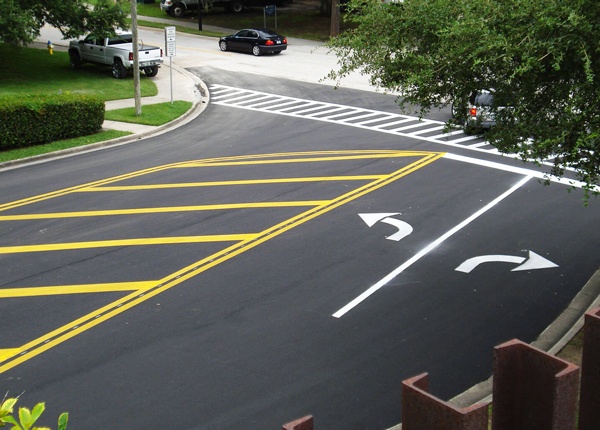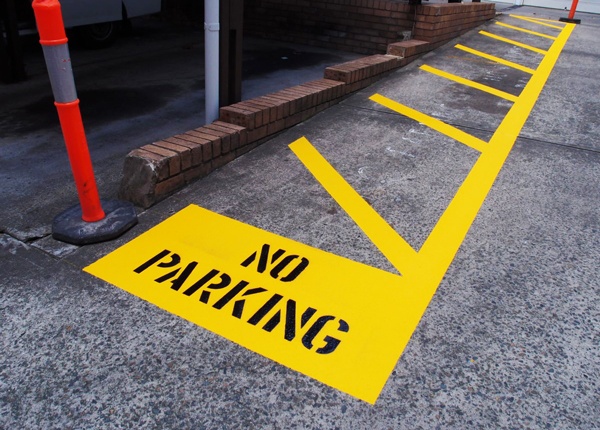
Pavement Markings 2022: Not Just For The Driving Test
Updated Nov. 30, 2021Before learning to drive, most people pay very little attention to pavement markings. To non-drivers, they may seem like meaningless patterns painted on the roadway. Like signs and signals, pavement markings communicate vital information to road users about what they must or must not do on a stretch of road. Every line, symbol, letter and block color painted on a road is there for a reason, though it may not be immediately obvious to the untrained eye.
This block of articles explores all the painted pavement markings you must know to drive safely and abide by the laws of the road. As a very new driver, you will need to pay close attention to the road markings you encounter to determine their meanings. Eventually, you will receive the information given by pavement markings on a completely subconscious level, as reading them becomes second nature. Let’s begin with an overview of the topics covered in this section.
Standard pavement markings
We start out exploration of pavement markings by looking at standard lines on the roadway. Whether you are driving in a fast-paced urban environment or a quiet, semi-rural road, you will encounter solid lines, broken lines and possibly even patterns formed with lines on the road’s surface. But what do they all mean? Painted lines on the roadway are relatively easy to interpret, once you know the basic rules which govern them.
- 1

b'Yellow lines.'b'
'b'\r\n\tYellow lines separate opposing streams of traffic.' - 2

b'White lines.'b'
'b'\r\n\tWhite lines separate streams of traffic traveling the same way.' - 3

b'Solid lines.'b'
'b'\r\n\tSolid lines indicate a divide that cannot be crossed for merging or passing purposes.' - 4

b'Broken lines.'b'
'b'\r\n\tBroken lines indicate a divide that can be crossed for merging or passing purposes.'
Of course, there are occasional exceptions to these rules. In some cases, crossing a solid line for the purposes of turning or reversing your direction of travel is permitted. Find out all about these issues in our full “Standard Pavement Markings” article.
Lettering and symbols on the road
Often, the rules and restrictions laid out by road signs are reinforced with words, letters or symbols painted on the road’s surface. The most common among these is the directional arrow. Single or double-headed directional arrows – which may be straight or curved – tell drivers which direction they should be traveling within a certain lane and whether that lane should be used for turning. Other common symbols and letter markings include:
- Words such as “STOP” or “SCHOOL CROSSING” which tell drivers how they must behave in a certain area.
- Letter and symbol combinations, such as “RXR”, which is used to mark railroad crossings.
- Picture and symbol combinations. For instance, shared road markings or “sharrows”.
- Symbols on their own, such as “yield” triangles.
- Block-colored pavement, indicating that a stretch of road is reserved for or frequented by a special road user.
Your driver’s handbook is an excellent resource in learning to decipher these markings. Use it alongside the information in this article, to learn the meanings behind common letter and symbol road markings.
Parking spaces and colored curbs
Our pavement markings section finishes up with a look at parking spaces and colored curbs. Curb colors can be a point of real confusion for less-experienced drivers, as there is no universal set of rules for what each color means. Some cities and states do not use colored curbs to indicate parking rules at all, leaving drivers to rely on their own knowledge of the area and other factors to determine whether they may park in a certain spot.
If you spot a colored curb and are not sure what it means, the safest option would be to park elsewhere. Irrespective of the color used, all painted curbs indicate that parking restrictions are in place on that stretch of road. It may be that:
- Parking is not allowed under any circumstances
- You may park for a limited time only
- This space is reserved for permit holders
- You may park for loading or unloading purposes
- Use of a parking meter is required
Always check up and down the edge of the street for posted road signs indicating the meaning of the colored curb. In general, red or yellow curbs mean do not park, and blue curbs mean that only disabled permit holders may park. Jump to this article to learn more about colored curbs and the usual meanings behind green and white curbs. Make sure you check local information in your driving manual, as curb colors vary from one region to the next.
Roadway reflectors
On many major roads and limited access highways, roadway reflectors are used in addition to pavement markings. Yellow or white reflectors are embedded in the roadway at regular intervals alongside lane markings, to help motorists remain within their lane when driving at night or in low-visibility conditions.
As reflectors are not flush with the road’s surface, motorists will also feel a “bump” if they have accidentally driven over them and crossed into an adjacent lane of traffic. Keep in mind that some roads do not have lane markings at all and will rely exclusively on reflectors to separate lanes of traffic.
Many reflectors are double-sided, to indicate the direction in which traffic should move. Double-sided reflectors appear yellow or white to drivers traveling in the right direction but red to drivers traveling in the opposite direction. If you enter a roadway and see red reflectors, turn around or pull over immediately!




